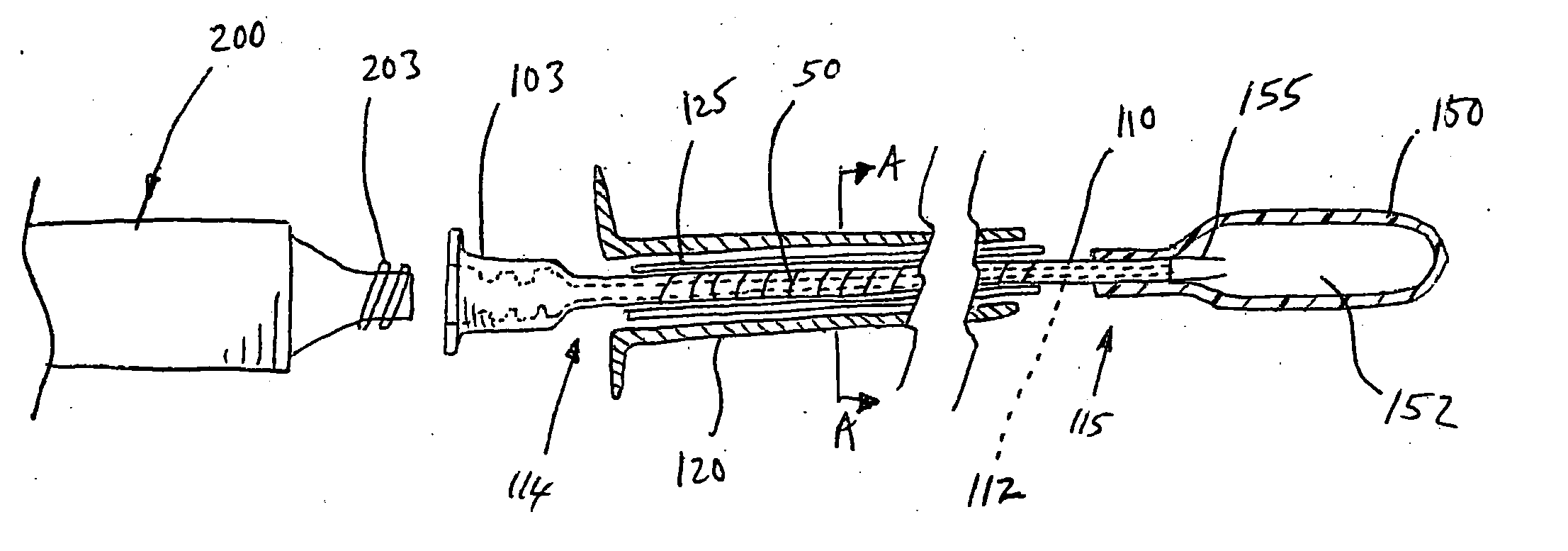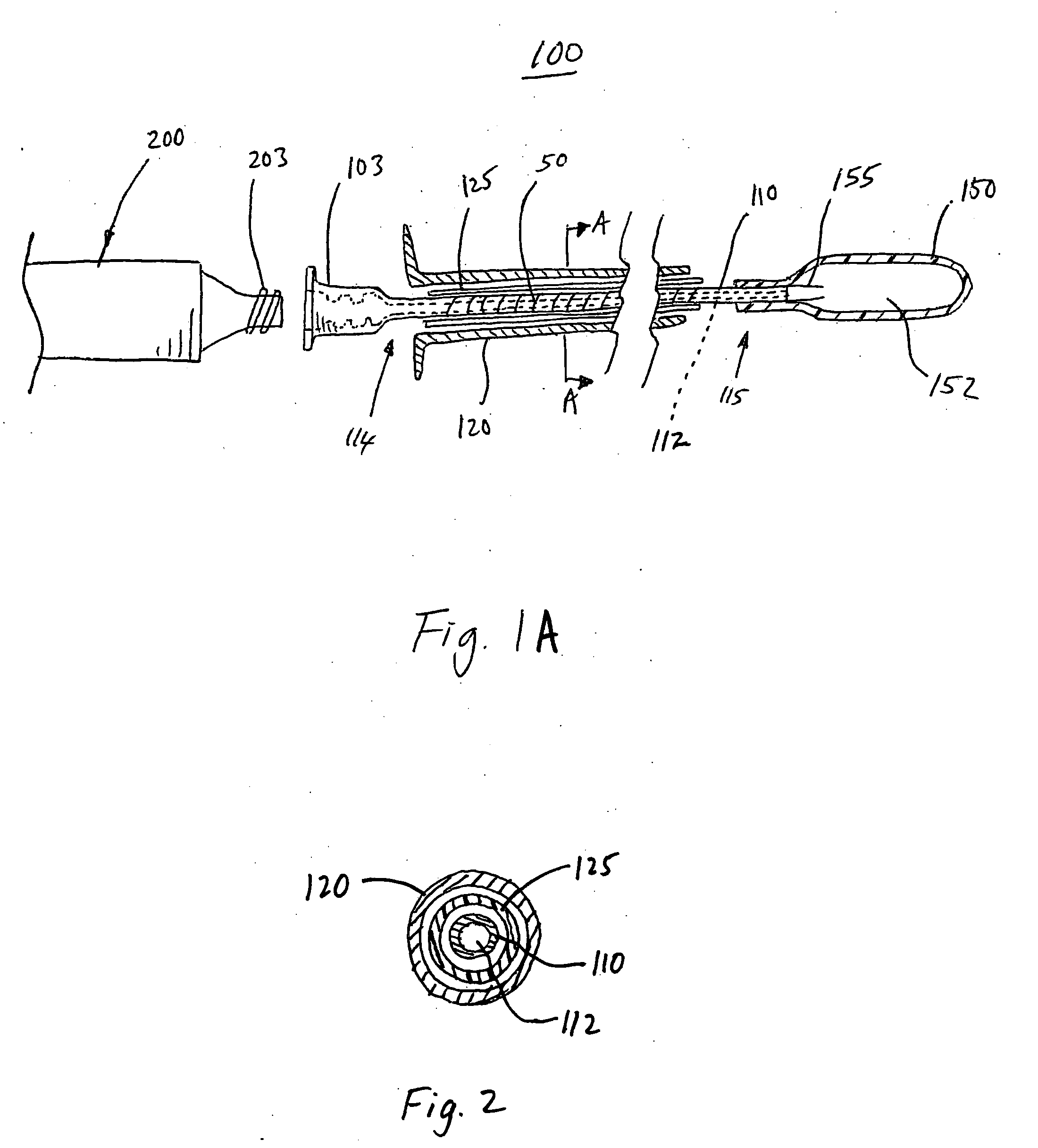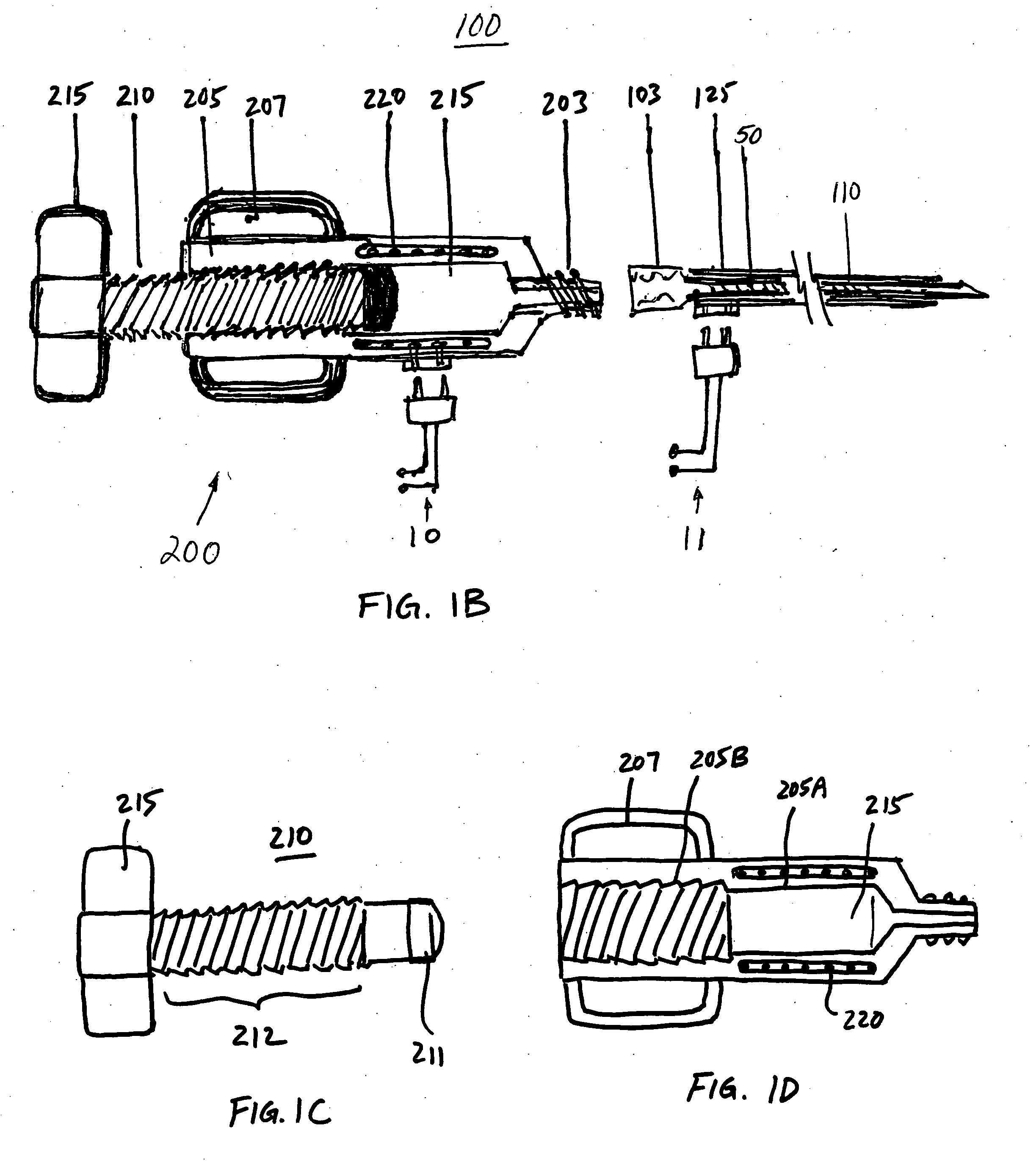Method and apparatus for minimally invasive repair of intervertebral discs and articular joints
a technology of intervertebral discs and articular joints, applied in the field of medical devices and methods, can solve the problems of not being able to realize percutaneous placement, 4-5 days for hydrogel to fully expand and reach the final dimension, and relatively long recovery time, so as to achieve the effect of reducing cost and being easy to handl
- Summary
- Abstract
- Description
- Claims
- Application Information
AI Technical Summary
Benefits of technology
Problems solved by technology
Method used
Image
Examples
Embodiment Construction
[0037] The devices and methods according to the invention described herein are adapted for percutaneous surgical operation using cannulas and catheters. Referring to FIG. 1A, a surgical device 100 for percutaneous repair of intervertebral discs and articular joints according to an embodiment of the invention is disclosed. The surgical device 100 includes a cannula 120 for percutaneously accessing the surgical repair site, such as an intervertebral disc or an articular joint. A catheter 110 is disposed within the cannula 120. The catheter 110 comprises an elongated shaft having a proximal end 114 and a distal end 115 for delivery of a polymer-based balloon inflating material. A lumen 112 extends longitudinally through the catheter 110 for delivery of the polymer-based balloon inflating material. In a preferred embodiment of the invention, this balloon inflating material is a thermoplastic elastomer (TPE). An expandable balloon 150 may be detachably attached to the catheter 110 at its...
PUM
| Property | Measurement | Unit |
|---|---|---|
| Temperature | aaaaa | aaaaa |
| Thermoplasticity | aaaaa | aaaaa |
| Opacity | aaaaa | aaaaa |
Abstract
Description
Claims
Application Information
 Login to View More
Login to View More - R&D
- Intellectual Property
- Life Sciences
- Materials
- Tech Scout
- Unparalleled Data Quality
- Higher Quality Content
- 60% Fewer Hallucinations
Browse by: Latest US Patents, China's latest patents, Technical Efficacy Thesaurus, Application Domain, Technology Topic, Popular Technical Reports.
© 2025 PatSnap. All rights reserved.Legal|Privacy policy|Modern Slavery Act Transparency Statement|Sitemap|About US| Contact US: help@patsnap.com



